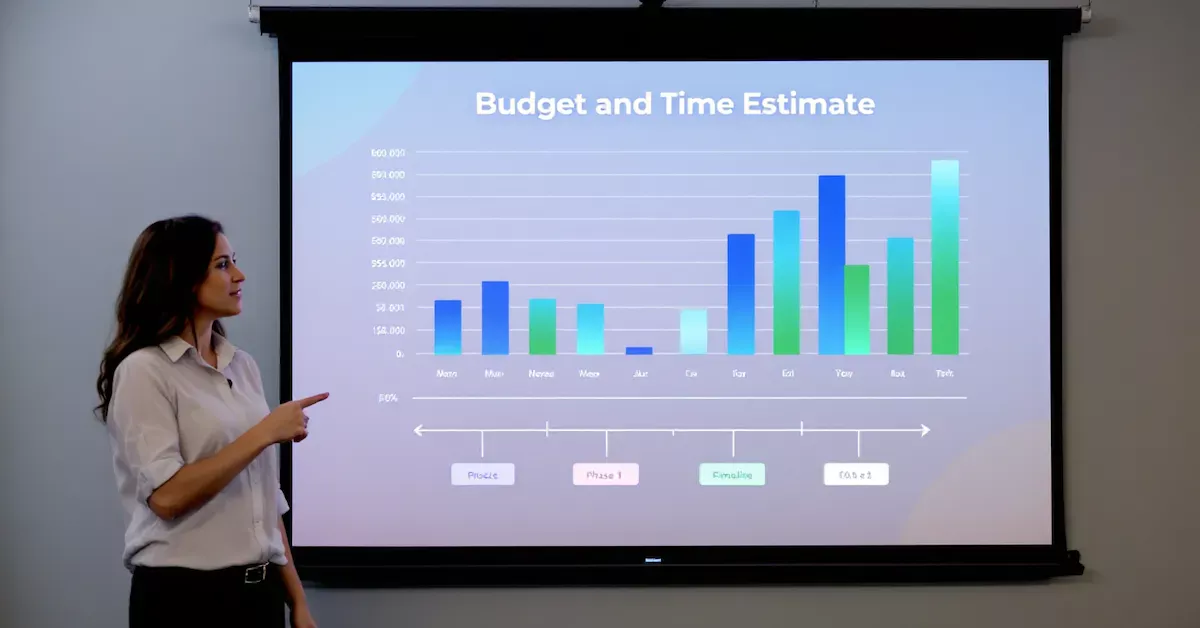
Why Budgeting Matters
Planning your website budget and timeline is one of the most important steps in ensuring your project’s success. A clear budget helps you avoid nasty surprises, make informed decisions, and get the best value for your investment. Likewise, understanding how long each stage takes helps you set realistic expectations and keep your project on track.
Typical Website Project Costs
Website costs can vary widely depending on your needs, the complexity of your site, and whether you do it yourself or hire professionals. Here’s a breakdown of the main cost areas for a small business website in Australia (2025):
Domain Registration
Your website’s address (e.g., yourbusiness.com.au).
Typical cost: $15–$50 per year.
Web Hosting
Where your website “lives” online.
Typical cost: $100–$500 per year for small business hosting.
Website Builder/CMS Subscription
Platforms like Wix, Shopify, or WordPress (may include hosting).
Typical cost: $0–$600 per year (DIY), or included in agency packages.
Design (DIY vs. Professional)
- DIY with templates: $0–$500 (template/theme cost)
- Professional design: $2,000–$8,000+ for a small business site
- E-commerce or custom: $8,000–$20,000+
Content Creation (Copy, Images, Video)
- DIY: Free (your time)
- Professional copywriting: $500–$2,000+
- Photography/video: $500–$2,000+
E-commerce Setup
- Add-on to a standard site: $1,000–$5,000+ (if using a pro)
- DIY with Shopify/WooCommerce: $0–$1,000 (plus transaction fees)
Marketing and Advertising
- Initial launch: $500–$2,000+ (ads, email, social media)
- Ongoing: $100–$500+ per month (optional)
Ongoing Maintenance
- DIY: Free (your time)
- Professional: $500–$2,000+ per year (updates, backups, support)
Sample Budget Table
| Item | Low Estimate | Medium Estimate | High Estimate |
| Domain Registration | $15 | $30 | $50 |
| Web Hosting | $100 | $250 | $500 |
| Website Builder/CMS | $0 | $300 | $600 |
| Design (DIY/Pro) | $0 | $3,000 | $8,000 |
| Content Creation | $0 | $1,000 | $2,000 |
| E-commerce Setup | $0 | $2,000 | $5,000 |
| Marketing/Advertising | $0 | $1,000 | $2,000 |
| Ongoing Maintenance | $0 | $1,000 | $2,000 |
| Total (First Year) | $115 | $8,580 | $20,150 |
Note: Most small business websites in Australia fall in the $2,000–$10,000 range for a professional build, with DIY options at the lower end and e-commerce/custom sites at the higher end.
Time Estimates
Every website project is different, but here’s a typical timeline for a small business site:
- Planning: 1–2 weeks (goals, features, research)
- Content Gathering: 1–4 weeks (writing, images, product info)
- Building/Setup: 2–6 weeks (DIY or with a pro)
- Testing: 1 week (checking everything works)
- Launch & Promotion: 1 week (going live, marketing)
- Ongoing: A few hours per month (updates, new content, support)
Tip: If you’re outsourcing, allow extra time for feedback and revisions. E-commerce and custom features may add weeks to the timeline.
Tips for Saving Money
- DIY Where Possible: Use website builders (Wix, Squarespace) or WordPress with free/affordable themes.
- Bundled Services: Some agencies offer packages that include design, hosting, and support.
- Use Free Tools: Canva for graphics, Unsplash for stock photos, Mailchimp for email (free tier).
- Start Simple: Launch with essential features, then add more as your business grows.
Hidden Costs to Watch For
- Extra Plugins or Apps: Many website builders and CMSs charge for advanced features.
- Payment Processing Fees: E-commerce platforms (Shopify, Stripe, PayPal) take a cut of each sale.
- Emergency Fixes: Budget for unexpected issues—broken features, security breaches, or urgent updates.
- Content Updates: If you need regular help with new content, factor in ongoing costs.

Example:
Gumnut Growth Centre started with a $5,000 budget for their first year. They chose a DIY website builder, wrote their own content, and used free stock images. They spent $30 on a domain, $200 on hosting, $300 on a premium template, and $500 on launch ads. After six months, they invested another $1,000 in professional photography and $1,500 in e-commerce features as their business grew.
Budgeting and planning your time up front will help you avoid stress, keep your project on track, and ensure you get the best value for your investment. If in doubt, start small and scale up as your business grows.
References: webapex.com.au, KC Web Design, Minimalist at Home, Expert Market